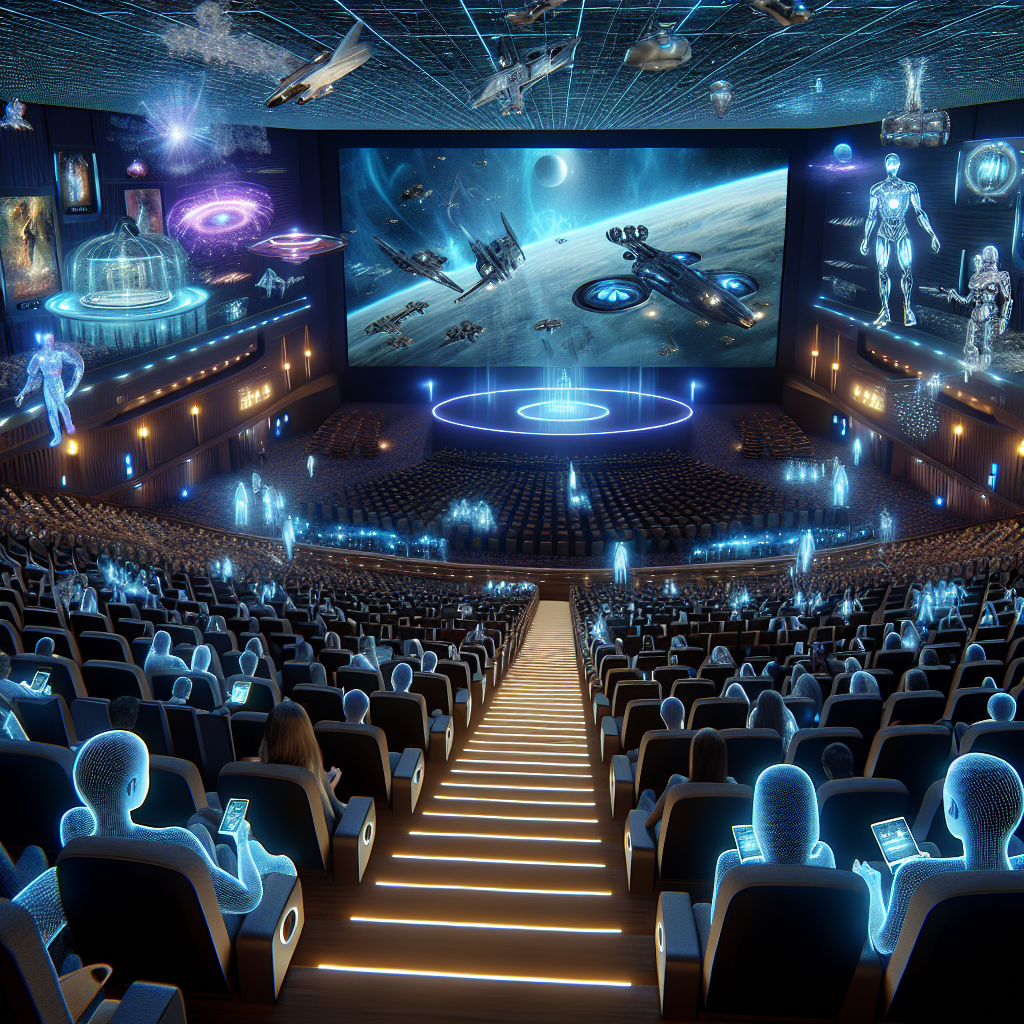The Dawn of AI-Generated Cinema: A Journey into the Future of Filmmaking
In an era where technological innovation is as rapid as the speed of light, one domain that's been fascinatingly disrupted is the art and science of filmmaking. The recent explosion in AI-generated content, particularly in the video and cinematic realm, has been nothing short of a rollercoaster ride—a thrilling blend of anticipation, awe, and a dash of skepticism. Let's dive into this fascinating world, where pixels meet creativity, and algorithms turn into art directors.
The Renaissance of AI in Entertainment
The world of AI generative video is on a turbo-charged evolution spree. With breakthroughs popping up almost as if they're on a schedule, the landscape of what's possible is being redrawn overnight. Imagine telling stories that breathe, characters that feel, and narratives that twist and turn, all birthed from the silicon womb of generative AI models. The concept isn't just revolutionary; it's reshaping the very fabric of storytelling and content creation.
The Predictions and the Pivot
Not too long ago, the notion of AI churning out complete cinematic experiences seemed like a distant dream. The skepticism wasn't unfounded; after all, how could a machine grasp the nuances of human emotion, the subtlety of dialogue, or the complexity of plot development? But as history has often shown us, underestimating technological progression is a folly. In a span of mere weeks, initial reservations metamorphosed into beliefs, marking a seismic shift in perspective. This pivot underscores a vital truth about innovation: it's not linear but exponential.
Breaking Down the Barriers
One of the most mesmerizing unveilings in this domain has been tools like Sora and P Labs’ lipsync feature. Sora, with its jaw-dropping realism and adherence to the laws of physics, has opened up new vistas for longer, more intricate generative videos. Meanwhile, P Labs has taken the semblance of life a notch higher by syncing audio files with AI-generated videos, making characters not just move but speak with a startlingly human-like cadence.
Alibaba's Emote and Beyond
In a similar vein, Alibaba's Emote project has pushed the envelope further, merging audio cues with visuals to create expressive, emotionally resonant portraits. The result is not merely a video but a canvas alive with sentiment, capturing the ebb and flow of music and emotion with uncanny accuracy. Such advancements aren't just technical marvels; they're redefining the boundaries of creative expression.
Yet, the innovations don't stop there. Tools like Stability AI's partnership with More Studios, LTX Studio's storyboard builder, and the AI-driven Terminator 2 remake are testimonials to AI's burgeoning role in not just supplementing but spearheading movie production. Each of these breakthroughs showcases a unique facet of AI's potential in filmmaking, from generating lip-synced dialogues to crafting entire movies based on textual prompts.
Learn more about the Alibaba Emote project
The Future is Generative: Anamorph and the Personalized Cinema
Perhaps one of the most intriguing developments is Anamorph's technology, reimagining films as fluid narratives that reshape themselves with each viewing. This generative approach to filmmaking isn't just innovative; it's a philosophical pivot, presenting movies as living, evolving entities. It hints at a future where cinema isn't just watched but experienced uniquely by every viewer, promising a revolution in how stories are told, perceived, and remembered.
The Path Ahead: Infinite Possibilities and the Challenges They Bring
As we stand on the precipice of this new era in filmmaking, the excitement is palpable. The potential for AI in creating, enhancing, and personalizing content is boundless. Yet, with great power comes great responsibility. The ethical considerations, copyright questions, and the impact on traditional filmmaking and jobs are discussions that must be had. How do we balance innovation with integrity, automation with artistry?
Moreover, as AI continues to blur the lines between creator and creation, the definition of 'authorship' itself may evolve. Will the directors of the future be algorithmic auteurs? And as viewers, how will our appreciation of art change when the lines between the real and the AI-generated become indistinguishable?
In the end, the journey into the future of AI-generated cinema is as much about technology as it is about us—our creativity, our ethics, and our insatiable hunger for stories that resonate, entertain, and inspire. As we chart this unexplored territory, one thing is clear: the script is still being written, and the best scenes are yet to come.
The world of AI generative video has set the stage for a narrative revolution, promising a future where cinema is not just watched but experienced in infinitely personal and ever-changing ways. As we embrace this brave new world, let us navigate its challenges with wisdom and its opportunities with wonder. For in the pixels and algorithms of today lie the stories of tomorrow, waiting to be told, experienced, and loved.
Related News
- The Dawn of a New Era in AI Video Generation
- Revolutionizing Trailer Production with AI: A Deep Dive into the Future of Filmmaking
- Unleashing Creativity with InVideo AI: A Deep Dive into Next-Level Video Production
- Unveiling the Cinematic Potential of AI: Crafting Movie Trailers in the Digital Age
- The Dawn of Sora: The AI Revolutionizing Video Generation
